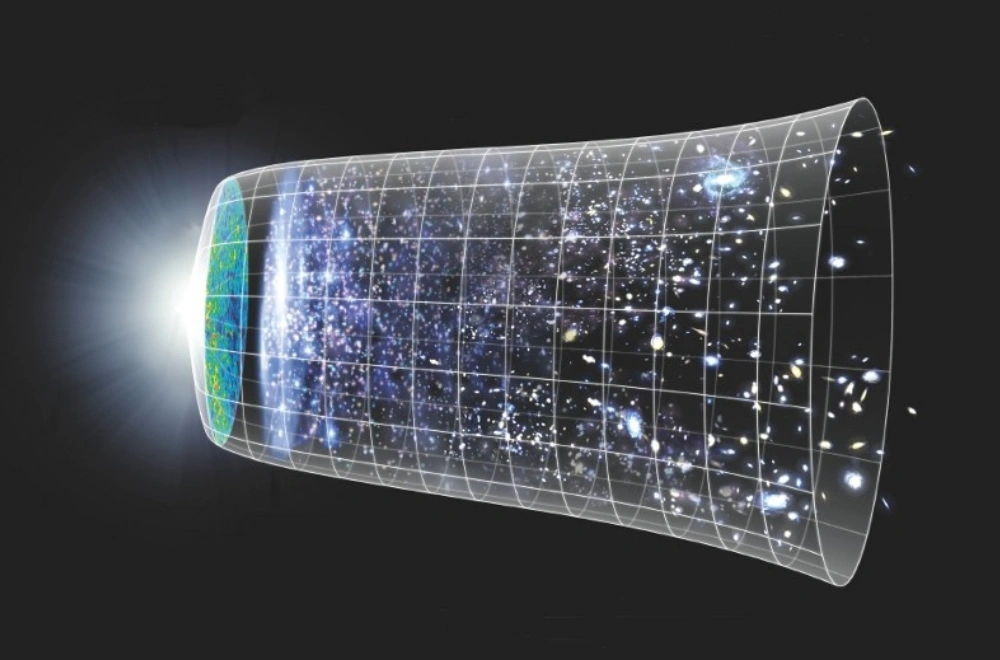Introduction
The Big Bang theory is the prevailing cosmological model explaining the origin and evolution of the universe. However, this theory initially faced several puzzles, such as the horizon problem, the flatness problem, and the monopole problem. In 1980, physicist Alan Guth proposed the theory of cosmic inflation to resolve these issues. Inflation suggests that the universe underwent an extremely rapid exponential expansion in the first fraction of a second after the Big Bang, smoothing out irregularities and setting the stage for the large-scale structure we observe today.
What is Cosmic Inflation?
Cosmic inflation is a brief period of accelerated expansion that occurred approximately 10⁻³⁶ seconds after the Big Bang, lasting until around 10⁻³² seconds. During this time, the universe expanded by a factor of at least 10²⁶ (possibly much more), far exceeding the speed of light. This superluminal expansion does not violate relativity because it was the fabric of space itself that was stretching, not matter moving through space.
Key Features of Inflation
- Exponential Expansion: The universe grew at an extraordinary rate, driven by a repulsive gravitational effect caused by a high-energy scalar field called the inflaton field.
- Quantum Fluctuations: Tiny quantum fluctuations during inflation were stretched to cosmic scales, later seeding the formation of galaxies and large-scale structures.
- Smoothing Effect: Inflation explains why the universe appears so uniform (isotropic and homogeneous) on large scales.
- Flatness Problem Resolution: The expansion drove the universe toward critical density, making it geometrically flat.
The Need for Inflation: Solving Big Bang Puzzles
1. The Horizon Problem
The cosmic microwave background (CMB) radiation is remarkably uniform in temperature (about 2.7 K) across the sky. However, regions on opposite sides of the observable universe were too far apart to have ever been in thermal contact under the standard Big Bang model. Inflation solves this by proposing that these regions were once in close contact before rapid expansion separated them.
2. The Flatness Problem
Measurements of the universe’s curvature suggest it is extremely close to flat (Euclidean). For the universe to remain flat over billions of years, its initial density had to be fine-tuned to an extraordinary degree. Inflation naturally drives the universe toward flatness by stretching space to such an extent that any initial curvature becomes negligible.
3. The Monopole Problem
Grand Unified Theories (GUTs) predict the existence of massive magnetic monopoles—relics from high-energy phase transitions in the early universe. However, none have been observed. Inflation dilutes their density by expanding space so much that monopoles become extremely rare.
Mechanism of Inflation: The Inflaton Field
Inflation is driven by a hypothetical scalar field called the inflaton field, which temporarily dominated the energy density of the early universe. Key aspects include:
- False Vacuum State: The inflaton field was initially in a high-energy metastable state (false vacuum), generating a negative pressure that caused repulsive gravity.
- Slow-Roll Phase: As the field “rolled down” its potential energy curve, it released energy, driving exponential expansion.
- Reheating: When inflation ended, the inflaton field decayed into particles, reheating the universe and initiating the hot Big Bang phase.
Evidence Supporting Inflation
1. Cosmic Microwave Background (CMB) Anisotropies
The CMB shows tiny temperature fluctuations (about 1 part in 100,000), which match predictions from inflationary quantum fluctuations. The angular power spectrum of the CMB aligns with inflationary models.
2. Large-Scale Structure of the Universe
Galaxy surveys reveal a cosmic web of filaments and voids that originated from primordial density fluctuations amplified by inflation.
3. Primordial Gravitational Waves (B-Mode Polarization)
Inflation should have generated gravitational waves that left a faint imprint on the CMB’s polarization pattern (B-modes). While not yet conclusively detected, experiments like BICEP/Keck and future observatories (e.g., LISA) aim to find this smoking-gun evidence.
Challenges and Alternatives to Inflation
Despite its success, inflation remains a theoretical framework with open questions:
- What is the inflaton field? No direct detection has been made.
- “Multiverse” Problem: Eternal inflation may lead to an infinite multiverse, making predictions difficult to test.
- Alternative Theories: Some propose bouncing cosmologies (e.g., ekpyrotic universe) or modified gravity theories as alternatives.
Conclusion
Cosmic inflation is a cornerstone of modern cosmology, elegantly resolving key problems of the Big Bang theory while providing testable predictions. Future observations of the CMB, gravitational waves, and large-scale structure will further refine or challenge this paradigm, deepening our understanding of the universe’s earliest moments.
References
- Guth, A. (1981). The Inflationary Universe: A Possible Solution to the Horizon and Flatness Problems.
- Linde, A. (1982). A New Inflationary Universe Scenario.
- Planck Collaboration (2018). CMB Polarization and Inflationary Cosmology.
